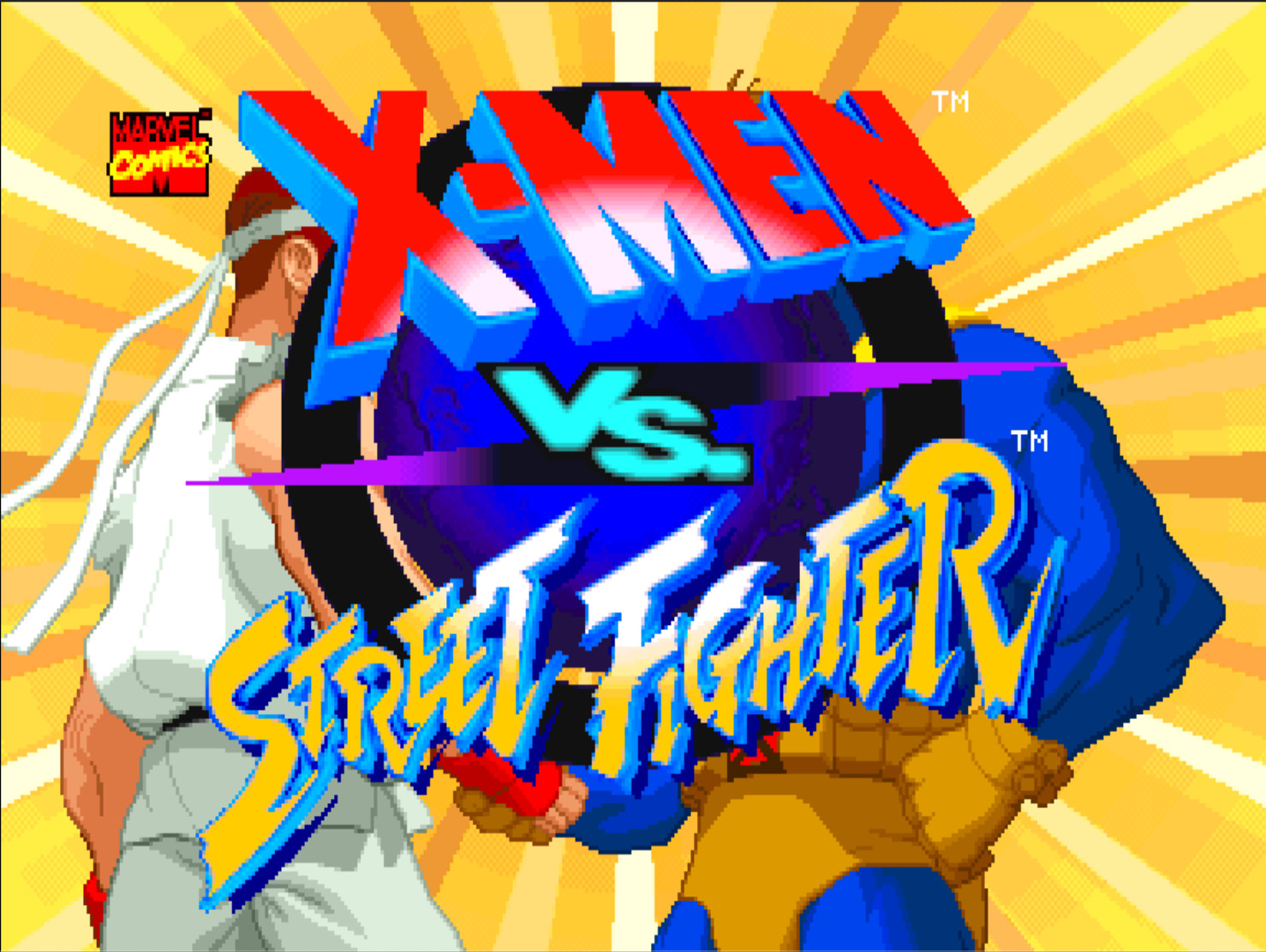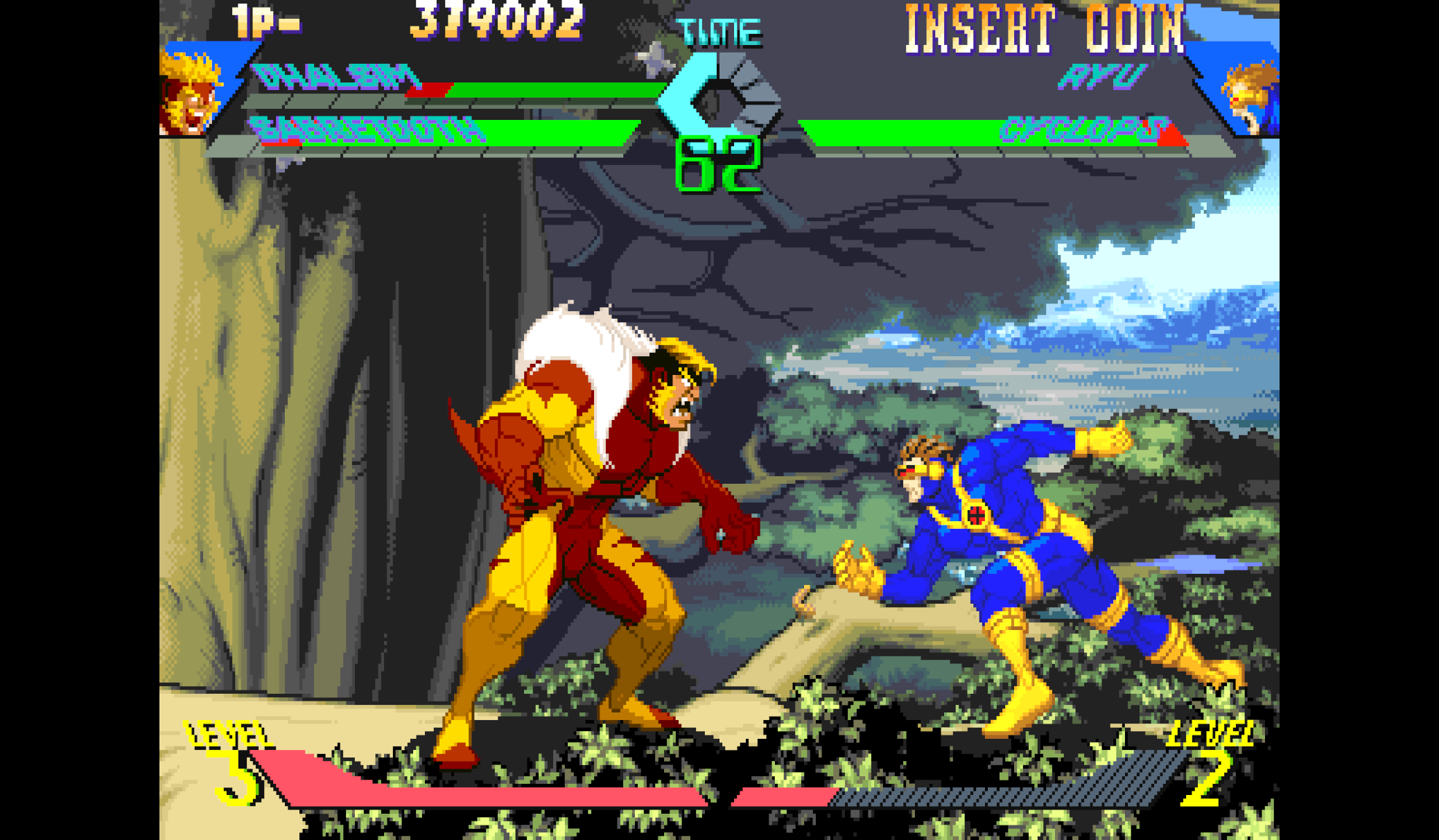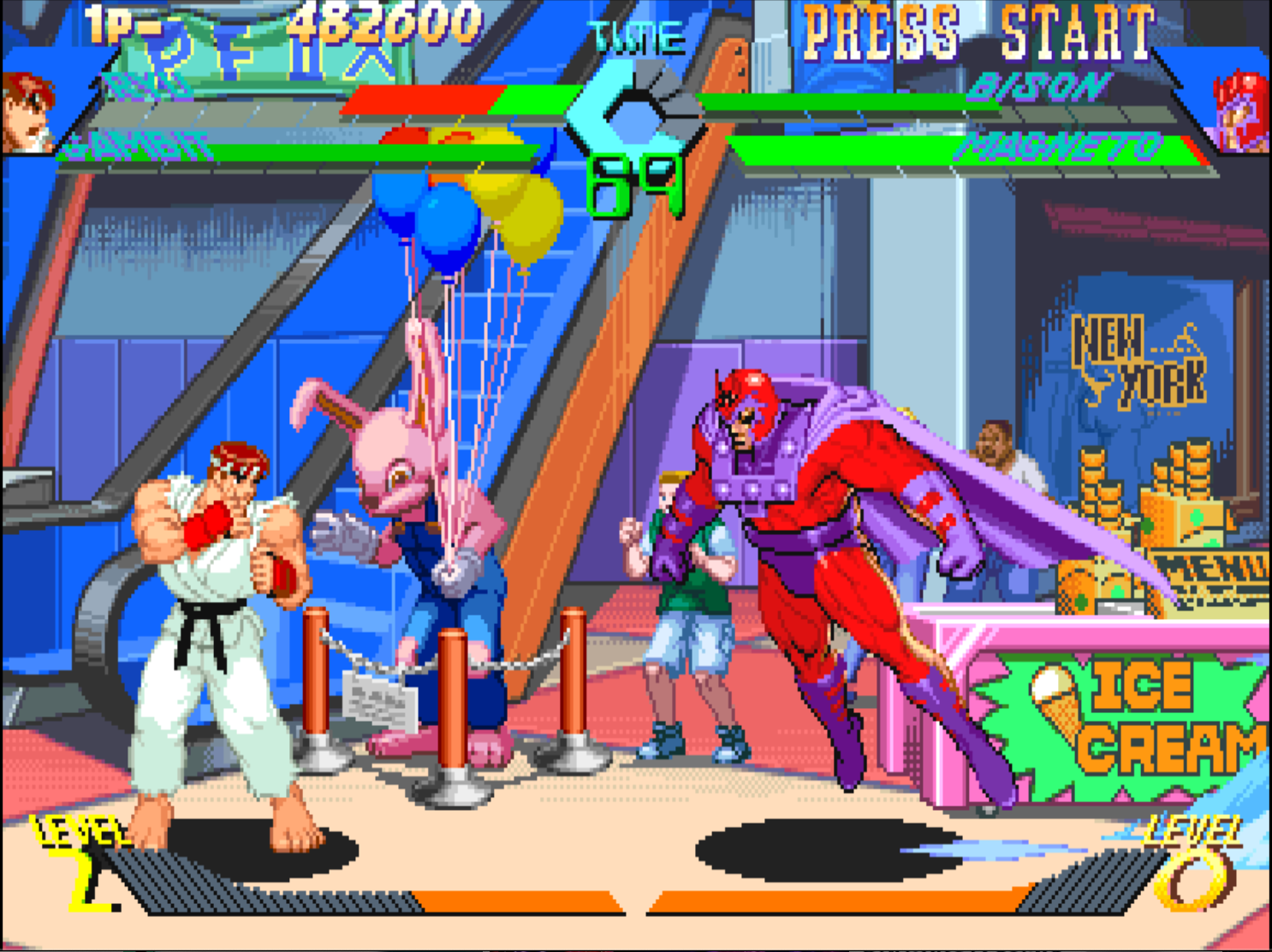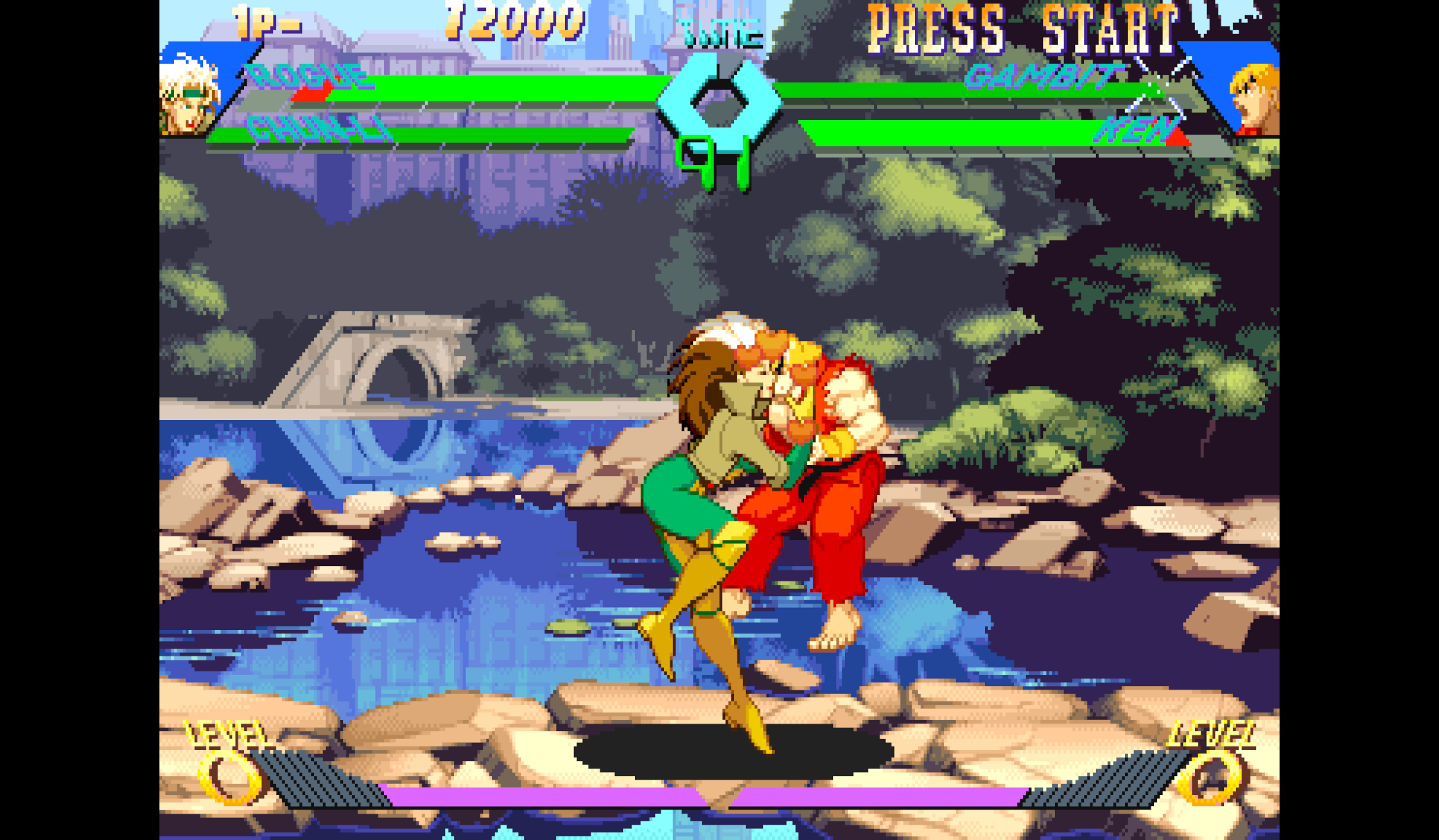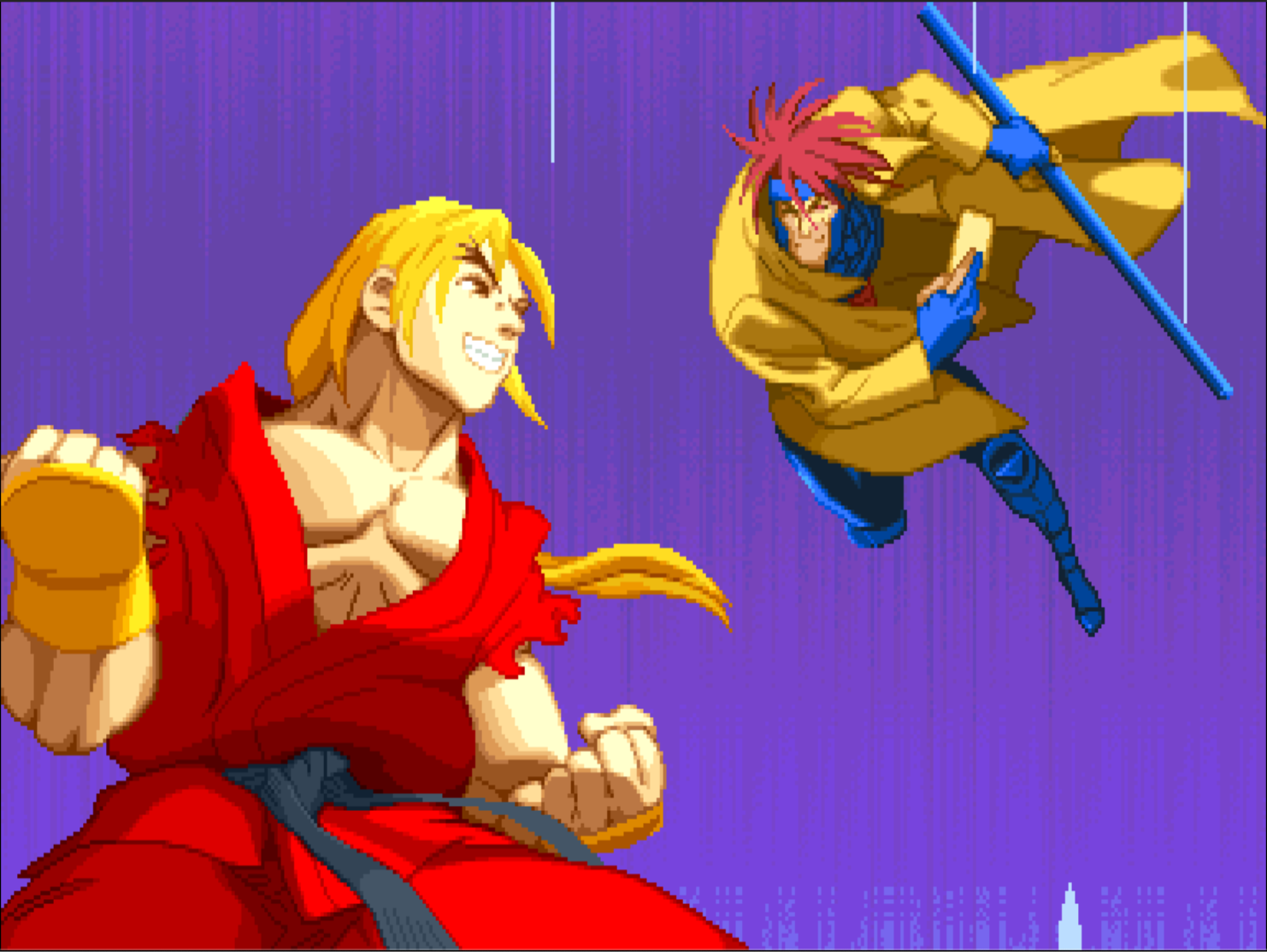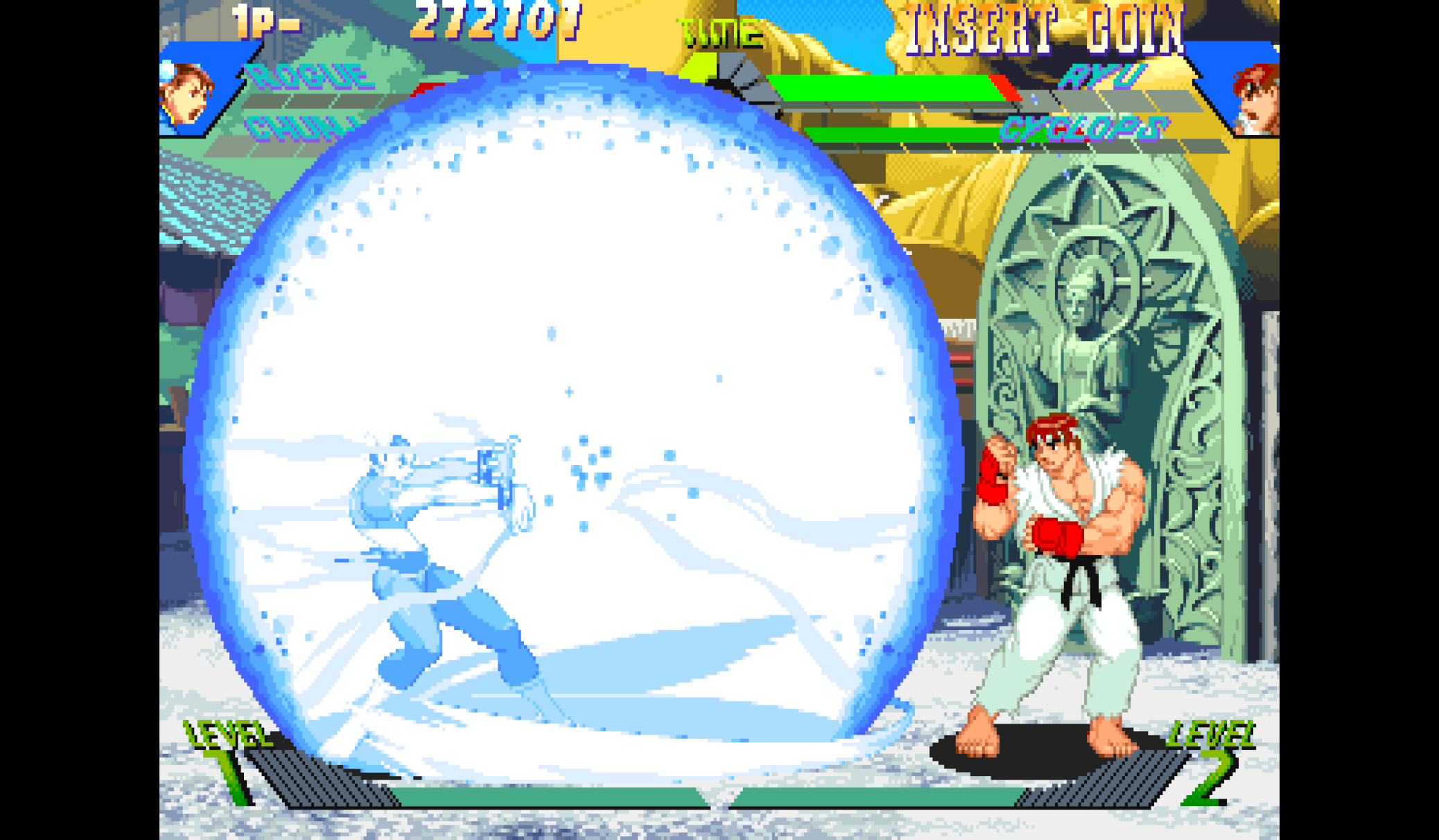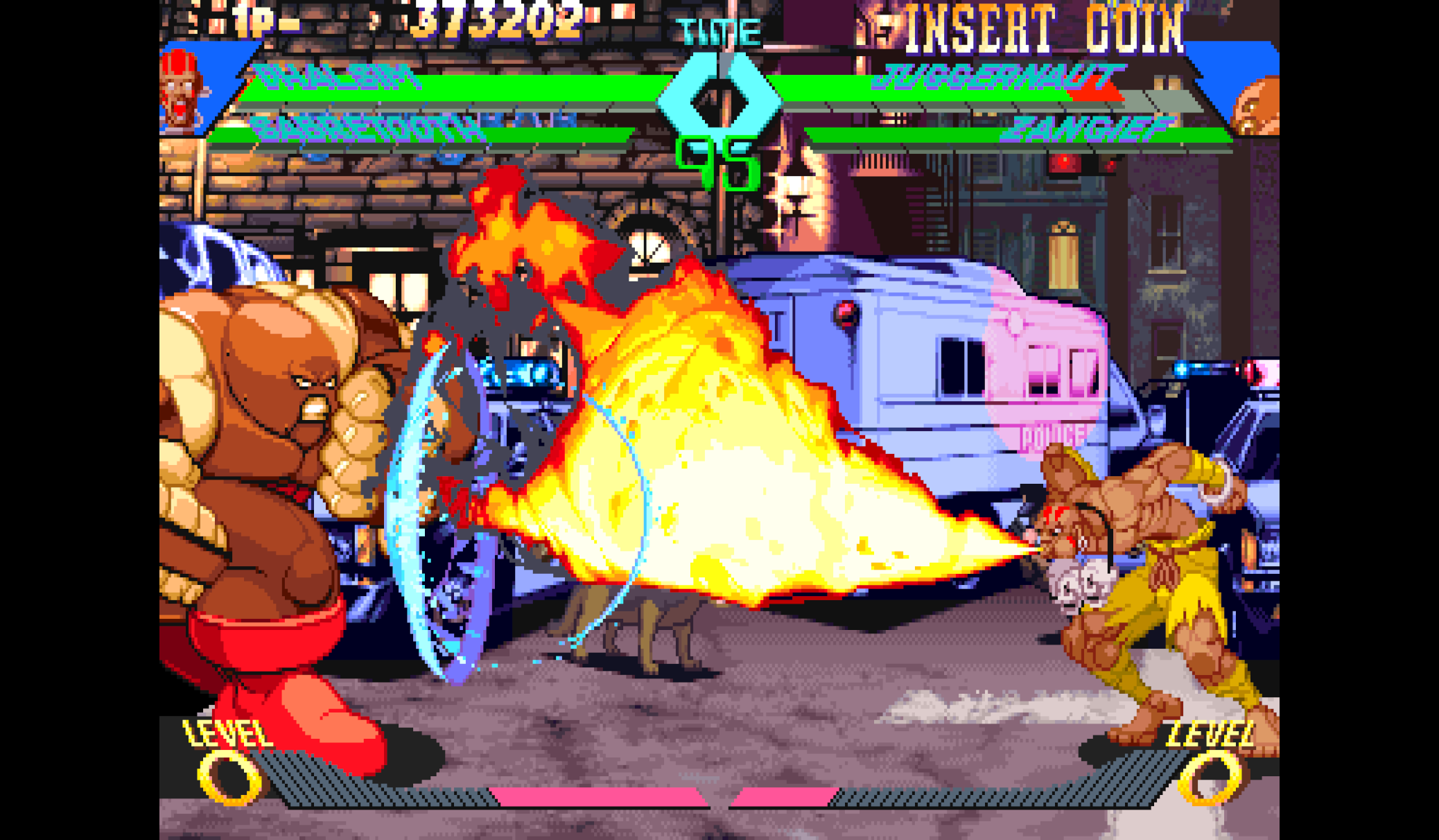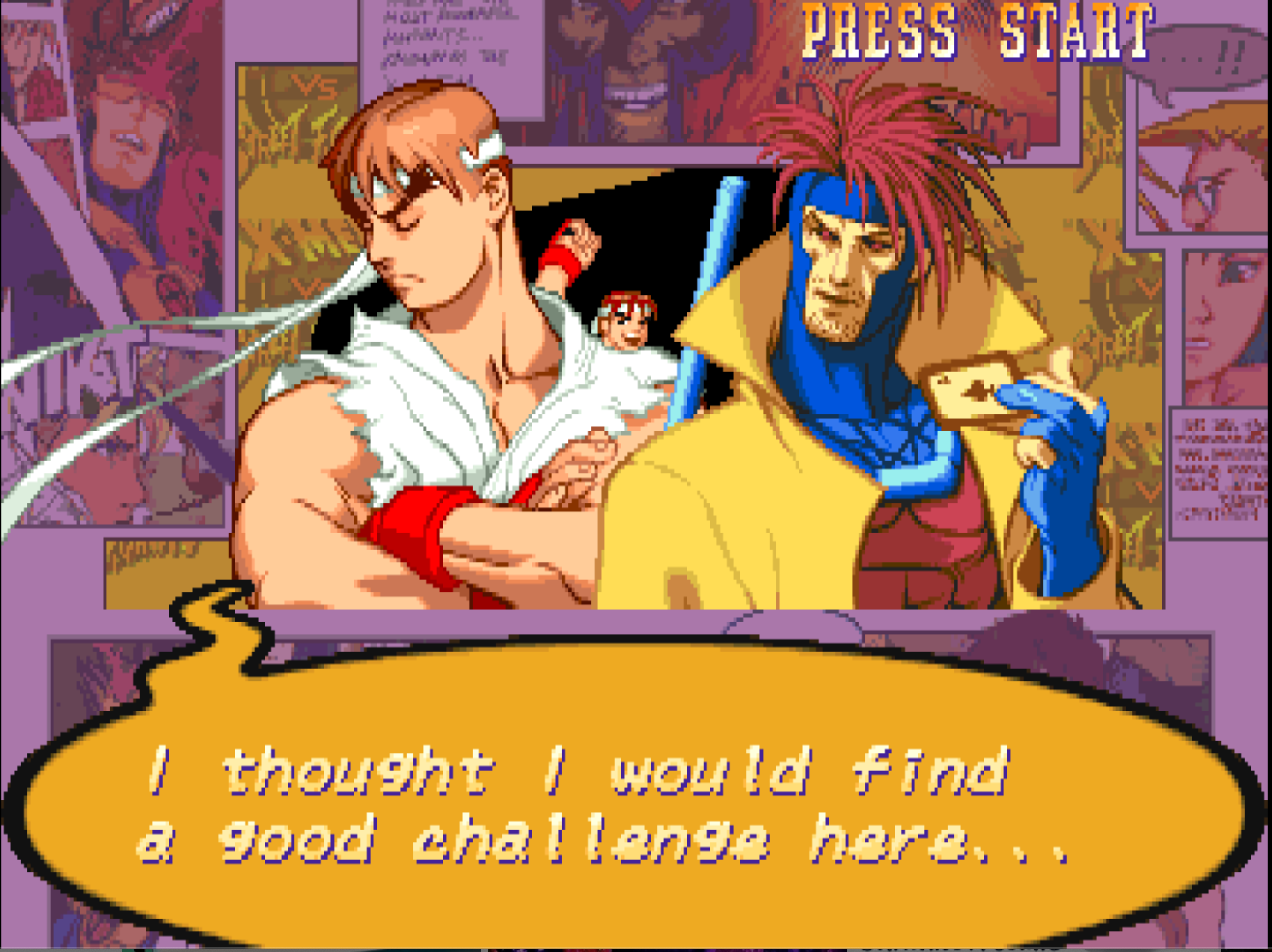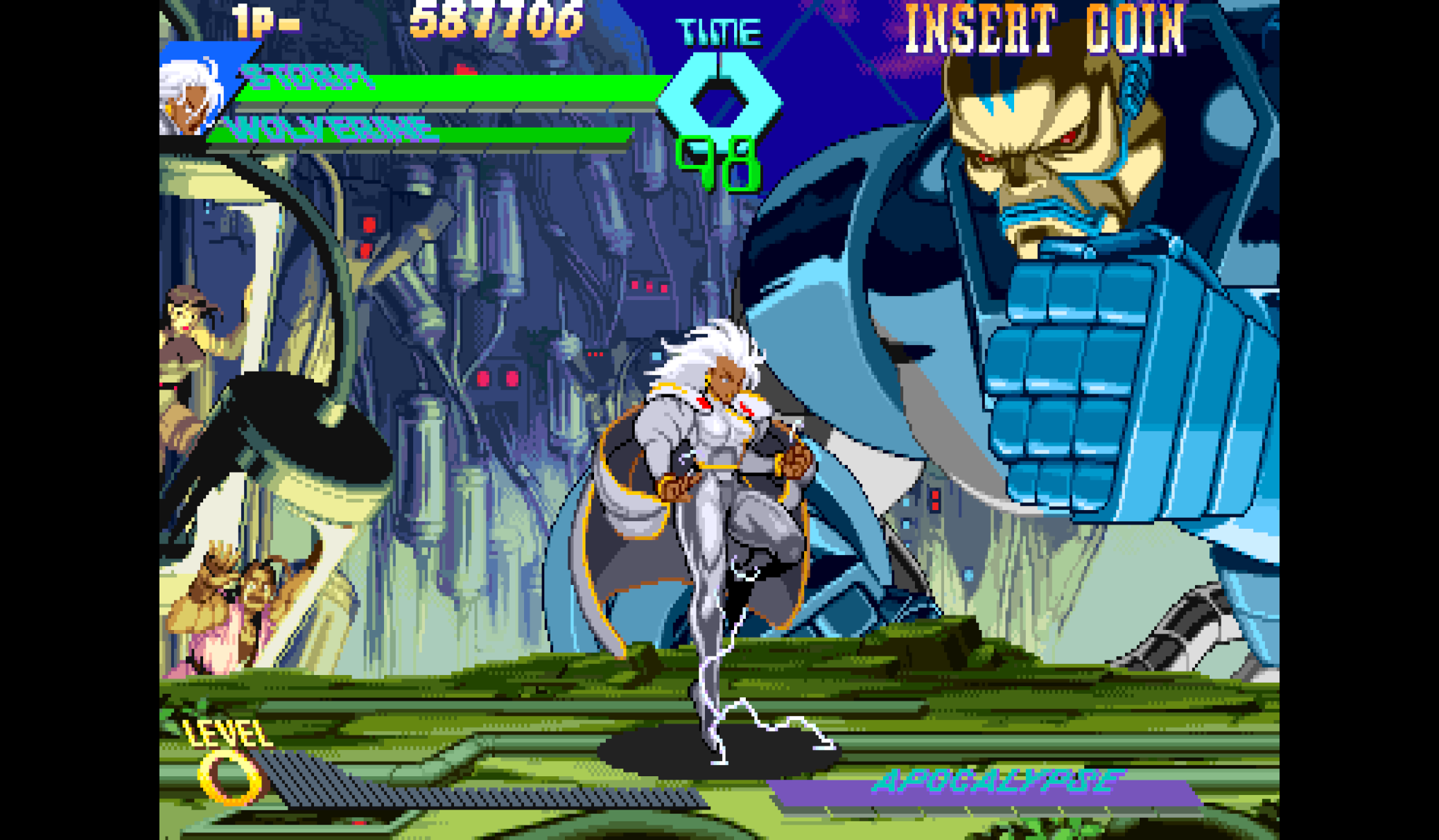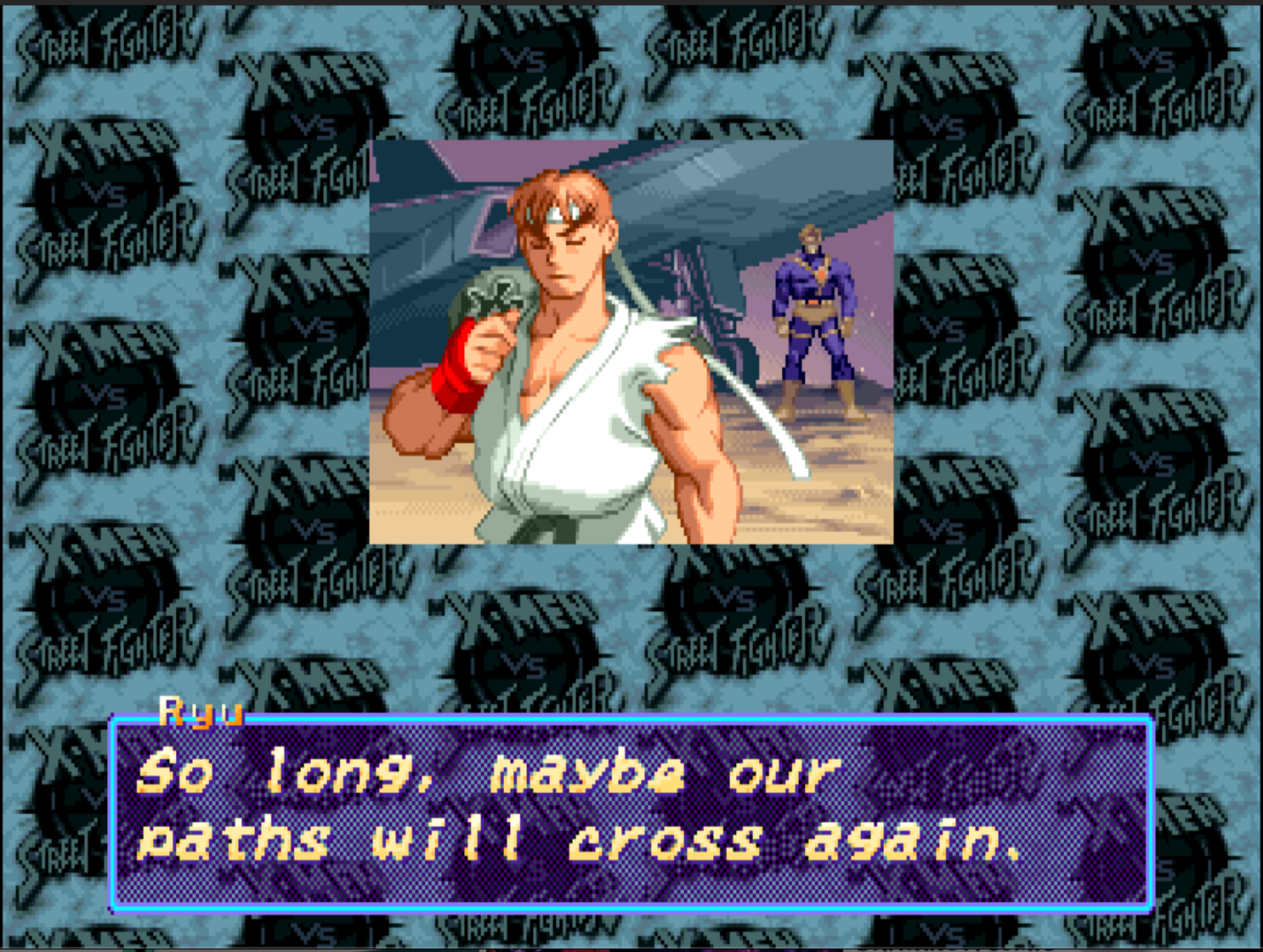X-Men vs. Street Fighter review
It’s difficult to properly express how big of an X-Men fan I was in the 90’s. I know I’ve discussed it some in my review of the X-Men game on Genesis, and my review of X-Men: Mutant Apocalypse for SNES, but I was completely obsessed. It’s genuinely embarrassing how into X-Men I was—I basically wanted to be Gambit. I only bring this up again to say that X-Men video games were 100% guaranteed to grab attention.
And if X-Men was my #1 most-loved thing in the mid-90’s, #2 was probably Street Fighter. (For a while, I guess Killer Instinct probably would’ve been up there too.)
Street Fighter II on SNES had introduced us to the Fighting Game genre and gotten me immediately hooked. We of course had SF2, SF2 Turbo, and Super SF2—which I believe was the version I played the most. I dug into SF player guides just to see the artwork. I watched and rewatched Street Fighter II: The Animated Movie—which I genuinely believe is a secretly good film and the best video game movie of all time. I also watched the campy Hollywood disasterpiece starring Van Damme and Raul Julia. When Street Fighter Alpha came out, I was even more pumped for its overtly anime aesthetic, and really dove into the series’s story and characters (extremely light as they were). By the middle of the decade, I was a hardcore SF fan as well.
So image the shock and awe on display when 13-year-old Lucas, both a hardcore X-Men superfan and dedicated SF player, saw an X-Men vs Street Fighter machine at a mall arcade in Ames, Iowa. I LOST MY MUTHAF^CKING MIND! This was the single coolest thing ever to happen in the history of cool things!
The combination of these two properties in particular was literally unbelievable for me, in the truest sense of the word. For a media product to be so perfectly attuned to my tastes was implausible, and yet here it was: a shiny new arcade cabinet, radiating sheer awesomeness in all its 90’s glory. I was blown away.
Sure, a crossover between the two hottest entities that Capcom had the rights to make games with maybe shouldn’t have come as the biggest surprise in the world. Capcom had already made two fighting games featuring Marvel Comics characters already, first with X-Men: Children of the Atom (COTA) and then Marvel Super Heroes. And yes, COTA also blew me away when I first saw it in action, its character animations were truly incredible! But that was merely a good-looking X-Men fighting game. (It didn’t have Gambit.)
XMvSF was so much more than just an X-Men fighting game. It was gaming’s first true crossover event.
The intercompany crossover, while extremely prevalent in comic books (especially in the booming 90’s), had rarely been seen in video games. The closest thing to a real crossover event in video games up until this point was probably Battletoads & Double Dragon. (Though Battletoads was owned by Rare and Double Dragon was owned by Technos, Tradewest was able to make the crossover game because they held the publishing rights to both properties.)
So instead a simple sequel to COTA, XMvSF was the comic book crossover realized in video game form. It represented the coming together of two iconic casts of characters, the clashing of two fictional universes, and the ensuing showdown between superpowered warriors.
Following the comic book crossover tradition, our heroes must meet and end up fighting each other over some misunderstanding. They ultimately reconcile and then join forces against a common foe, the true villains. You know how it goes; tale as old as time. XMvSF accomplishes the crossover team-up premise perfectly with a single core mechanic: you select a pair of fighters and use them in tandem. This tag team mechanic was a major innovation, and would, of course, kick off the insanely popular Marvel vs. Capcom series.
Outside of the tag team aspect, XMvSF does actually feel like more of a sequel to COTA than to a SF game. Most of the game mechanics follow the over-the-top play style of a Capcom Marvel fighter (super-jumps, launchers/air combos, oversized projectiles, giant screen-covering super moves). The character select screen also uses the same music as COTA, not SFA2, a small audio clue of where this game comes from.
This was first time Chun Li’s super fireball became a massive, body-subsuming orb.
Due to the tag team setup, the matches in this game are one consistent fight. Instead of fighting multiple rounds (best 2 out of 3), the fight is played out in a single bout, with each fighter having their own lifebar to protect. If you’re particularly fond of rounds in matches for some reason, as soon as the first character is knocked out, it more or less feel like you’re moving on to Round 2. In fact, some of the stage backgrounds transition to another part of the scene.
Speaking of the backgrounds, they are pretty incredible. Many of them feature locations reminiscent of events from X-Men cartoon, including a shopping mall, the Danger Room, and an exploding power plant. There’s a Manhattan stage with cops and police dogs all over the street that I had misremembered as being Raccoon City from Resident Evil—a game which was released earlier that same year. Perhaps I imagined this reference because Jill Valentine eventually appeared in MvC2. But I was definitely wrong; it’s Manhattan and there are no zombies. The fight can continue into the sewers below street level though, which I will now pretend was a subtle homage to TMNT.
Must like the sweet stage backgrounds, the character sprites in this game are absolutely top-notch. Sure, most of the sprites here were reused from COTA and SFA2—which is why Charlie Nash is playable instead of Guile—but artwork and animation just look amazing. This is also the reason for the game “X” and “Z” visual styling, where X is for X-Men and Z is for Zero. (The original title for the Alpha series was “Street Fighter Zero”, which is still what it’s called in Japan.) Capcom was truly on top of their game at this time and their pixel art mastery was phenomenal.
As previously mentioned, Gambit is playable, which was a huge deal for me. In fact, all the X-Men characters are all based on their 90’s cartoon incarnations, even using the same voice actors from the TV show! This is why we get the likes of Gambit, Rogue, and Sabertooth, but Colossus, Iceman, and Psylocke don’t return; characters featured in the cartoon took priority. While it would have been cool to have Psylocke playable in this one—or see other comic book mainstays in action, like Nightcrawler—the cast does feel incredibly well chosen overall.
After a cameo in COTA, Akuma is back again as a “secrect” character. While hidden, he’s easily selectable this time—just press up on the top row—which is an appreciated convenience. You can also do his Raging Demon as a Level 1 super move, so do with that what you will.
Apocalypse appears as the games final boss, and in my opinion, he’s actually the best final boss the Vs. games ever had. True to his comic book origins, Apocalypse transforming into a massive screen-covering foe, so facing him is more like surviving an environmental hazard than a street fight. Cheap and punishing as it is, the showdown does fit the story and tone of the game. Plus Apocalypse is simply more interesting than the similar massive monstrosities Capcom ended up using going forward.
After defeating Apocalypse, there is one last fight. You take control of whichever character delivered the final blow and face off against the your tag team partner! While I’m fairly certain this was only included as a way to make character endings a more straightforward, it is a unique twist to throw at the unsuspecting player.
If you’re looking to play XMvSF these days, there remains a dearth of viable options outside of finding it an actual arcade. The PS1 port, for example, removed multiple frames of animation, and the tag team gameplay altogether(!!), because of RAM restraints. The Sega Saturn version apparently faired better—but like come on, who actually has a Saturn? So for years, emulators like MAME or Final Burn Alpha have been your only real option. However, Arcade1Up recently announced an X-Men vs. Street Fighter Arcade Cabinet, scheduled for release in 2020, so that’s something at least.
With this game kicking things off, it’s no wonder that the Vs. series went on to be phenomenal success. As fun as Marvel vs. Capcom plays—and the fact that Marvel vs. Capcom 2 is an insane over-the-top carnival ride—when given the choice, it’s X-Men vs Street Fighter that I most want to come back to, over and over. It was just the perfect game for its day, and a mind-blowing surprise that I have never gotten over.
Spoiler Alert: They totally did.

